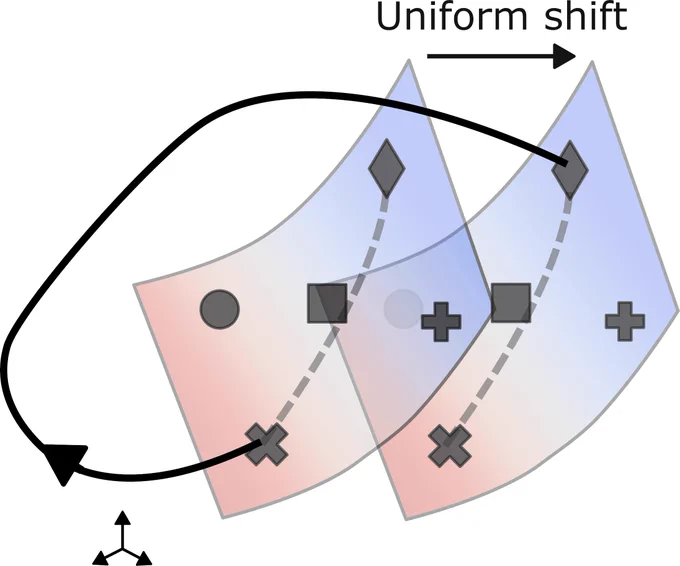A PhD candidate studying motor neuroscience @wusmsl. mkashefi.com
Joined March 2011
- Tweets 134
- Following 610
- Followers 310
- Likes 2,085
Mehrdad Kashefi retweeted
Thrilled that our paper is out today in @Nature! nature.com/articles/s41586-0…
Mehrdad Kashefi retweeted
Fun collaboration with @andpru @AntoineComite @hariteja11 on the merits of infinite horizon control model: how does the brain select a movement time?
Infinite horizon control captures modulation of movement duration in reaching movements biorxiv.org/content/10.1101/…
Mehrdad Kashefi retweeted
#JNeurosci: @mehrdadkashefi @andpru & @DiedrichsenJorn dissociate between the “what” and “how” components of motor sequence learning and provides evidence for the development of motoric sequence representations that guide optimal movement execution.
doi.org/10.1523/JNEUROSCI.02…
Thanks for reading 🙏 The paper also covers recordings from SMA, pre-SMA, dlPFC & GPi.
Full details here ⬇️ biorxiv.org/content/10.1101/…
Conclusion: Motor cortex dynamics are compositional. They simultaneously:
-generate movement
-maintain an internal representation of posture
-track task progress
Modeling: Using modular RNNs, we asked what’s required for this compositional structure to emerge. It turns out this solution is common whenever the effector is complex enough to demand posture-dependent control policies.
3️⃣ A condition-independent shift dimension: a trajectory reflecting trial progression, unfolding similarly across all movements, regardless of direction or posture.
2️⃣ Rotational dynamics: transitions linking posture-specific fixed points.These rotations were systematic—similar rotations produced similar reach directions—and their projection continuously updated posture.
Key finding: High-density recordings from M1 & PMd revealed a compositional neural geometry with 3 components.
1️⃣ A posture subspace: fixed points for each target, visited whenever the arm rested at that location before or after a reach.
Our approach: We trained monkeys to reach between all pairs of 5 targets. Each target was a start point on some trials and an end point on others. This design let us dissociate posture representations from movement dynamics.
Why this problem exists: Most insights come from center-out tasks, where all movements start from one spot. Here, reach direction and final posture are always correlated—making it impossible to separate movement dynamics from posture encoding.
The problem: Moving your arm to grab coffee requires different muscle commands depending on where your arm starts. We know the brain must incorporate posture when planning movement—but how neural dynamics achieve this remains unclear.
Excited to share my latest work with @JonAMichaels @DiedrichsenJorn & @andpru!
We asked: How does the motor cortex account for arm posture when generating movement?
Paper 👉 biorxiv.org/content/10.1101/…
Mehrdad Kashefi retweeted
Our paper is now out in Journal of Neuroscience!🥂
We show that motor training strengthens cortico-cerebellar connectivity in patients with cerebellar degeneration, especially in movement-related networks.
Great collaboration with @NeuroEssen @unidue, through @thinkglobal_rub
#JNeurosci | Using a large patient population, @carobellum et al. identified a neural pathway involving the cerebellum that has increased functional connections following motor training. doi.org/10.1523/JNEUROSCI.18…
Mehrdad Kashefi retweeted
We're thrilled to introduce ATHENA: Automatically Tracking Hands Expertly with No Annotations – our open-source, Python-based toolbox for 3D markerless hand tracking!
Paper: biorxiv.org/content/10.1101/…
Mehrdad Kashefi retweeted
Thrilled to share the new paper from the lab out today in @NatureHumBehav, led by the great Juliana Trach!
"Mental graphs structure the storage and retrieval of visuomotor associations"
nature.com/articles/s41562-0…
Mehrdad Kashefi retweeted
Excited to share our new paper, led by @_mshahbazi, with @OlivierCodol and supervised by me and Paul Gribble, where we introduce a context-free model of savings in motor learning: biorxiv.org/content/10.1101/…
Heading to #cosyne2025 ?
We're presenting new data exploring the geometry of neural dynamics in M1, PMd, PFC, SMA, and GPi during reaching movements with varying start locations, directions, and extents.
Find me at Poster Session 3-091 — or anytime before or after!
Our paradigm enables a clear dissociation between the "what" and "how" components of motor sequence learning and provides compelling evidence for the development of effector-specific sequence representations that guide optimal movement execution. 10/n
















